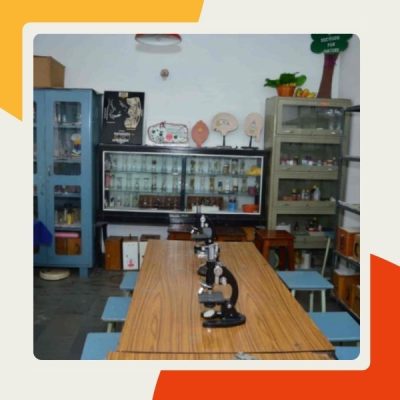Infrastructure at St. Anthony's Junior College
St. Anthony's Junior College boasts a modern and well-planned infrastructure to provide a conducive learning environment.
Infrastructure at St. Anthony's Junior College
St. Anthony’s Junior College boasts a modern and well-planned infrastructure to provide a conducive learning environment. The spacious classrooms are well-ventilated and equipped with digital learning aids. The well-stocked library offers a vast collection of books, journals, and research materials. Advanced science labs for Physics, Chemistry, Zoology, and Botany support hands-on learning. A computer lab with high-speed internet ensures students stay updated with technology. The auditorium hosts seminars, cultural programs, and academic events. A well-maintained sports complex encourages physical fitness and extracurricular activities. The campus is safe and secure, with CCTV surveillance and a disciplined environment. Green spaces and a botanical garden enhance the aesthetic appeal of the college. St. Anthony’s Junior College provides an ideal infrastructure for holistic education and overall development.

The Physics Lab at St. Anthony’s Junior College is designed to foster scientific curiosity and innovation. It is well-equipped with modern apparatus to conduct experiments in mechanics, optics, electricity, and magnetism. Students get hands-on experience with various instruments like Vernier calipers, microscopes, and spectrometers. The lab provides a practical approach to theoretical concepts learned in the classroom. Safety measures are strictly followed to ensure a secure learning environment. Our dedicated faculty members guide students in conducting precise experiments and analyzing results. Interactive learning methods, including simulations, enhance conceptual understanding. The lab promotes problem-solving skills through observation, analysis, and experimentation. It plays a crucial role in preparing students for competitive exams and research-oriented careers. The Physics Lab is truly a hub of discovery and innovation.
The Chemistry Lab at St. Anthony’s Junior College is a dynamic space for hands-on learning and experimentation. It is equipped with advanced tools, glassware, and reagents for conducting qualitative and quantitative analyses. Students perform experiments in organic, inorganic, and physical chemistry under expert supervision. Proper safety protocols, including the use of lab coats, gloves, and fume hoods, ensure a secure working environment. The lab fosters analytical thinking by encouraging students to observe chemical reactions and interpret results. High-quality microscopes and spectrophotometers help in detailed molecular studies. Students learn titrations, salt analysis, and synthesis of compounds, enhancing their practical skills. Digital tools and simulations complement traditional experiments for better understanding. The lab prepares students for higher studies in medical, pharmaceutical, and research fields. It is a place where chemistry comes to life through experimentation and innovation.


The Botany Lab at St. Anthony’s Junior College is a well-equipped space dedicated to plant science. It includes microscopes, herbarium specimens, and plant models for detailed study. Students conduct experiments on plant physiology, genetics, and ecology. The lab allows hands-on experience with seed germination, photosynthesis, and transpiration experiments. A well-maintained botanical garden complements the lab by providing live specimens. Students learn tissue culture techniques, biodiversity analysis, and plant taxonomy. The lab encourages research on medicinal plants and sustainable environmental practices. Interactive sessions and field visits enhance practical knowledge beyond textbooks. Students develop analytical and observational skills essential for careers in botany, agriculture, and biotechnology. The Botany Lab is a green haven for exploring the fascinating world of plants.
The Zoology Lab at St. Anthony’s Junior College provides an immersive learning experience in animal biology. It houses preserved specimens, anatomical models, and microscopes for detailed study. Students explore animal classification, physiology, and ecology through practical sessions. Dissections of specimens help in understanding the structural organization of organisms. The lab emphasizes biodiversity and conservation through research-oriented projects. High-resolution microscopes enable students to examine tissues, cells, and microorganisms. Students engage in DNA extraction, ecological surveys, and genetic studies to enhance learning. Visual aids and digital resources make complex zoological concepts easier to grasp. The lab fosters curiosity and critical thinking for careers in medicine, biotechnology, and environmental sciences. It is a gateway to understanding the intricate world of animal life.











